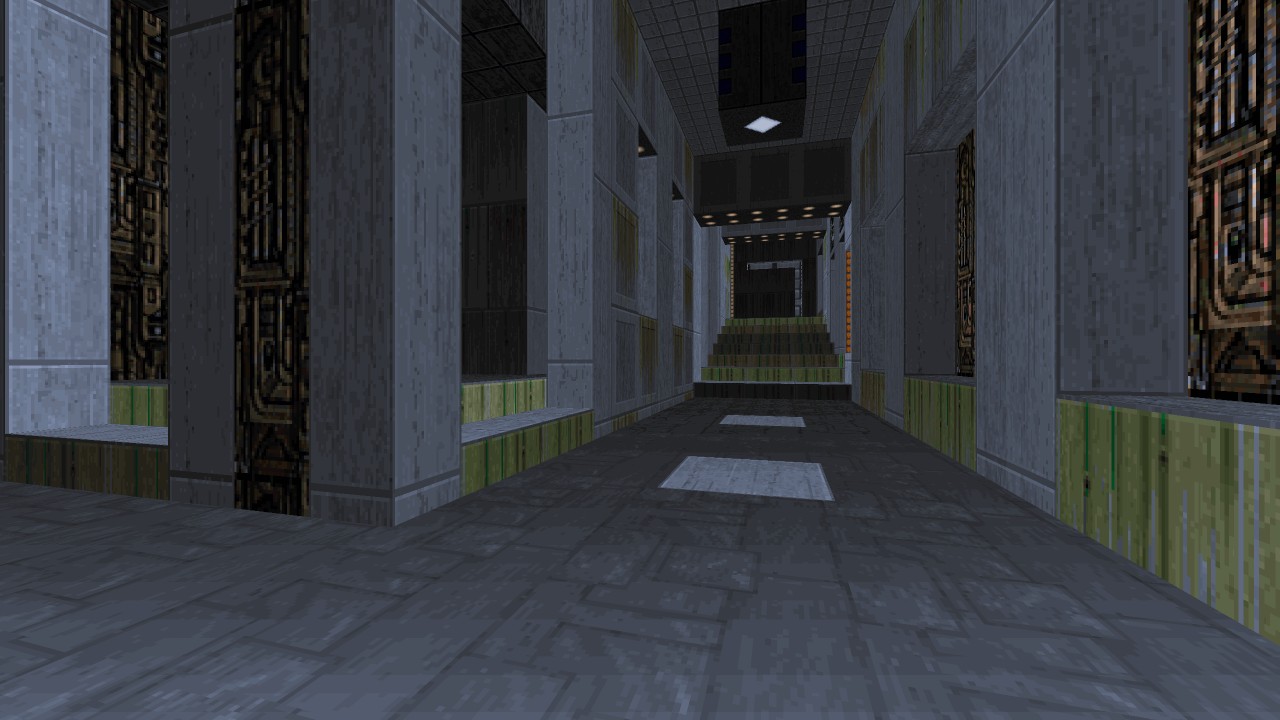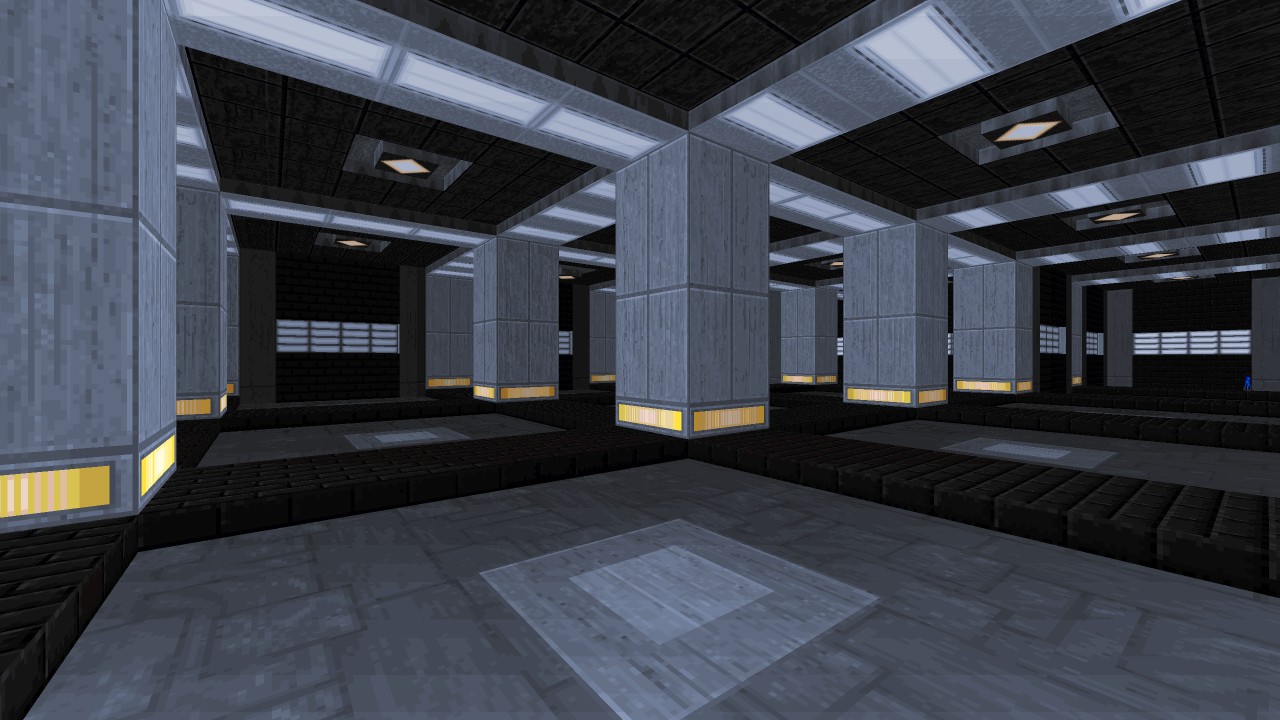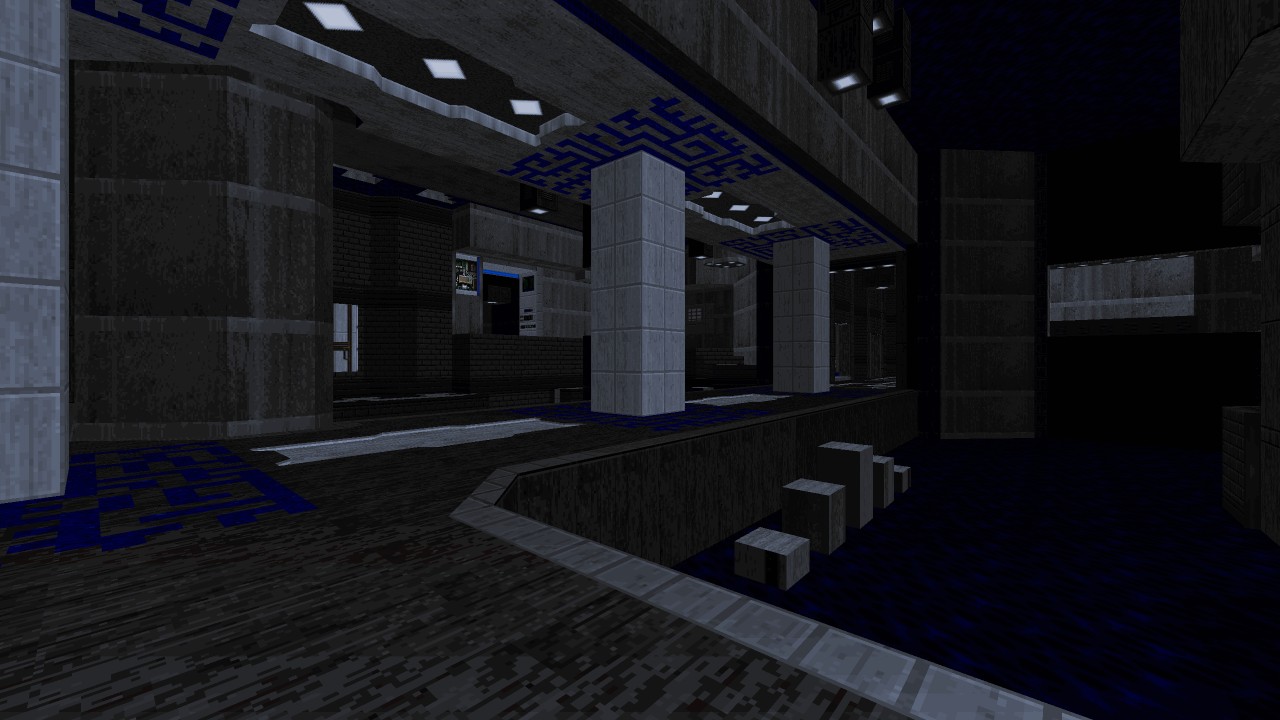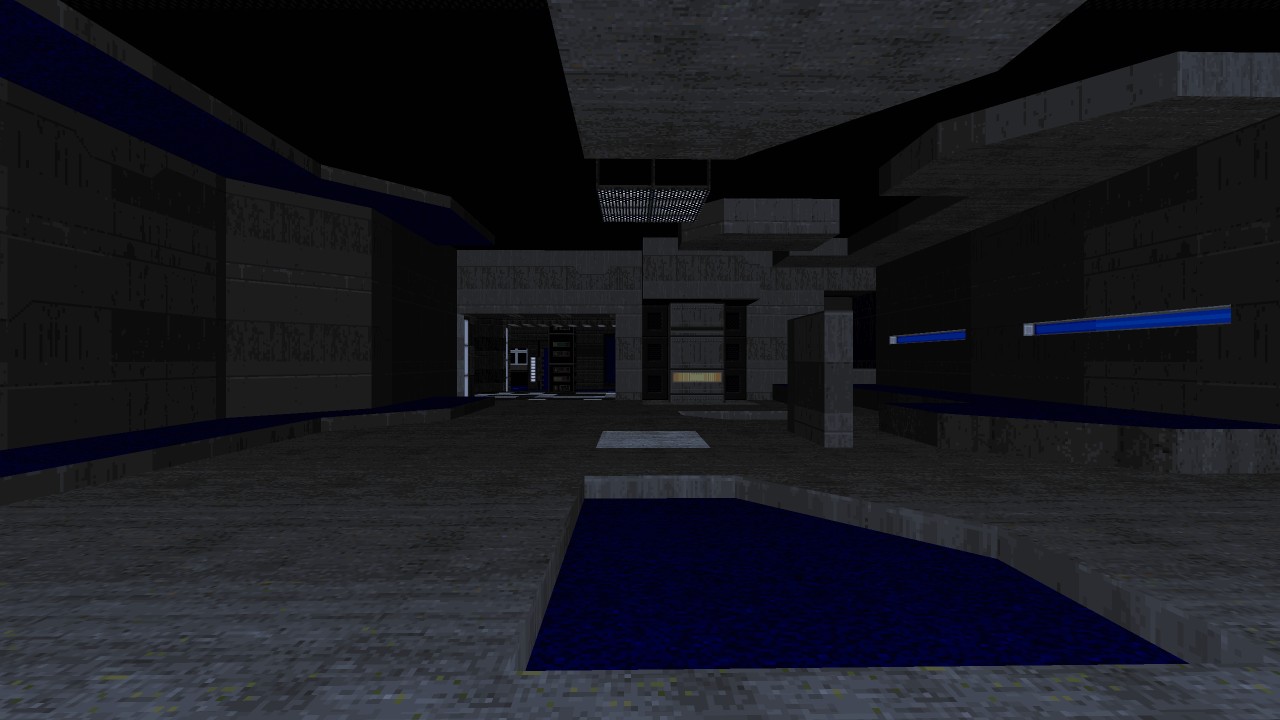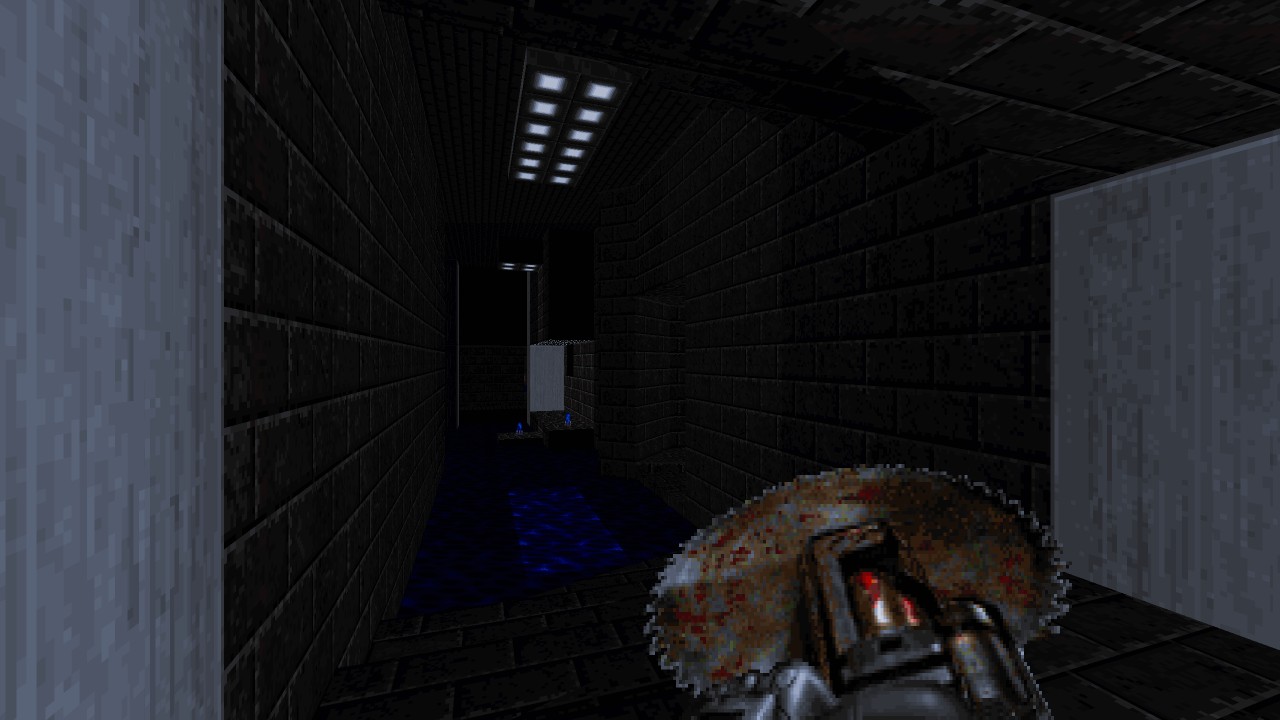Introduction
At the edge of a dead world suspended in darkness, you find yourself in a strange space. Getting here wasn’t easy, almost dying in the process. Now only one bullet in the chamber remains, but at least you’re still able to keep moving for now. The rules here are the same: survive and find a way home.
Review
As the lift stops with a heavy thud you’re greeted to a quiet dread, arriving here low on health barely able to stand up straight. Only a soft ambient beat plays for comfort as you cautiously step inside a concrete maze permeated with cold hues and dark voids. I wasn’t quite ready to break the silence here just yet, grabbing what little ammo and healing scraps can be found to increase my odds getting out of this alive. I was finding myself being immersed into this world under a short time span, ERASER defines what it sets out to do early on, a sombre piece of work based around constant exploration and delving deeper into the unknown within vast ever expanding hallways. Combat is a muted part to the core experience where enemy numbers are sparse, but so too is gear left lying around to deal with them. This necessitates a desire to scavenge every corner despite having a smaller carrying capacity, making do with limited supplies and choosing when to use them, found in frugal amounts like a pair of shotgun shells or blueberry flavoured bottles scattered around providing a single point of health. Many weapons have received a facelift and behaviour change adding another layer how to engage each encounter, now starting with an automatic rifle to replace your pistol and a quick knife that serves well to save ammo during these earliest stages.
Allowing yourself to get lost among the many branching paths should be an inevitable part of this journey, one that doesn’t follow any routine even if there are locked barriers requiring keys. Procuring weapons and boosting munitions is also another important goal for tackling stronger foes lurking up ahead, ignorance to do so may pose problems later on. Just picking one offshoot, seeing where they lead and what I’ll find there is where most of my enjoyment came from. Should I reach additional forks to note down or some dead-end to turn around from, I always had an option somewhere to continue looking for leads. This style of progression works too well for me, it’s less about the mapper silently guiding players along a specific route and instead all about trusting them to discover answers by engaging with the work at their own pace. Your clearest goals otherwise are seeking out keys, the blue providing many shortcuts between sections while both red and yellow keys are required for reaching an exit, leaving most traversable space as a non-linear venture to find these.
The setting where ERASER takes place isn’t bound by logical means, paths twisting and turning, raising and lowering on a whim, where cramped corridors squeeze between whatever gaps these don’t accommodate. You’ll be stuck indoors barring one secret area, no windows to catch a glimpse of normality where the nearest equivalent instead overlooks an endless void and a large pyramid suspended above. Computer monitors, pipework embedded into walls and even occasional UAC signs suggest we should be located somewhere familiar, perhaps an old abandoned base now occupied by the demons residing here. Yet this maze-like structure to me appears as a mere imitation, as if the very place itself is alive, luring someone into a false sense of security before realising they’ve been trapped here. Very few pockets of comfort can be found with an odd bedroom or cosy lounge area tucked away somewhere out of sight. It’s all then comes down to making sense of the nonsense, not simply how it appears but also how to traverse those roundabout ways to grab a weapon seen beyond a wire mesh, stepping across randomly placed stone pillars to reach another ledge or ascending stairways and lifts to access a lower section elsewhere. Sometimes two points become connected via impossible means, so utilising the map is vital to not get spun around and lose your way.
Walking around ERASER reminded me of both the second half to Didy’s BAUHAUS and “The Oldest House” from Remedy’s CONTROL, with their focus around brutalist architecture and strange constructions. The atmosphere here in particular is on point, curated to create a consistent sense of being alone and unwelcome. Most notable is a palette change to give off a slight blue hue that causes scenes to feel as if everywhere is cold to the touch, I could imagine breathing out mists of air while rubbing my hands to stay warm. This look also pairs well with design mostly composed of light and dark concrete textures adding a much needed hint of colour that would otherwise be dominated in grey. Other colours still mange to pop well amongst the concrete textures however, yellows and blues being particular standouts. HUD messages have also found suitable adjustments as if reading the thoughts processed by your player character, a little extra flavour that I liked especially for key pickups and their locked door texts. Sound effects have also been considered to retain a certain tone, going as far as to provide a softer secret found tune to avoid jarring port specific ones to spoil the mood. It also leans into PlayStation Doom for doors and lifts which I always love to hear, these loud chunky mechanics echoing within large environments to make you feel small. Weapons like the Bonesaw (a chainsaw replacement) also use a much quieter noise making it less of an earache to idle with and take advantage of. Eldryde has put a lot of consideration behind the visual and audio experience which were a major reason I became so immersed the whole time.
Combat always remains a subtle aspect compared to exploration, aiming for more incidental encounters while busy trekking to and fro, getting caught off guard when coming across a Hellknight without the proper equipment on hand to deal with them effectively. There’s some survival horror influence applied to progression, knowing when to either avoid fights or careful use of frugal supplies until these become more plentiful. As more of the level becomes uncovered your held resources grow in time, allowing for confident encounters once bigger brutes begin to show their faces. Fighting demons barely pose an issue due there being so much space to move around in general, if anything the most hazardous scenario was tiptoeing across platforms in the only toxic pool room risking my precious health due to a clumsy fall. These encounters simply become a battle for resources and whether you want to risk going for melee just to save a few rounds or deal with this problem later. The finale increases enemy counts and types a fair bit but nothing that can’t be handled by moving around often and going wild with your collection of stuff. I never did find the backpack during my first run so had to constantly rush around collecting dropped shotguns and mags as my stock depletes, but still having enough munitions and health to finish up without problems.
Conclusion
Releases like ERASER are amongst my favourite kind of levels, even for games in general, one that respects players to figure out the process for themselves and allowing them to get lost within a maze of looping spaces, discovering resources and weapons along the way while narrowing down objectives as you dominate each section. I love the atmospheric design and decisions made to create a consistent desolate mood as I’m scrounging up every last scrap I can carry before moving onto the next branch. I’ll be keeping my eyes on Eldryde’s future output as they’ve definitely carved a little niche in their own style, I’m curious where they’ll be taking things from here.


